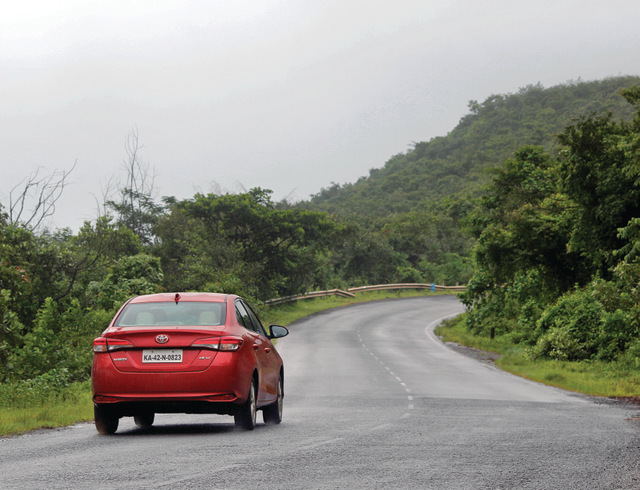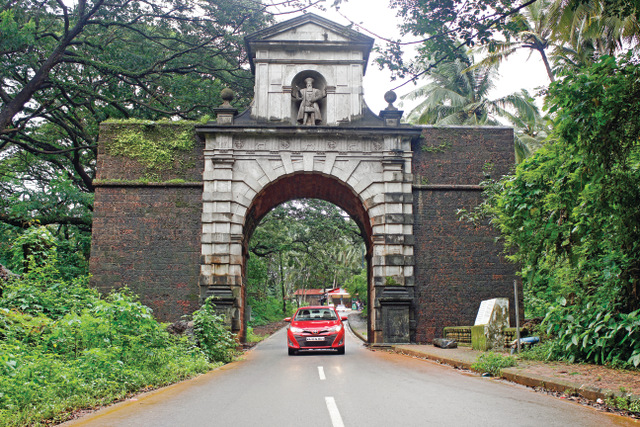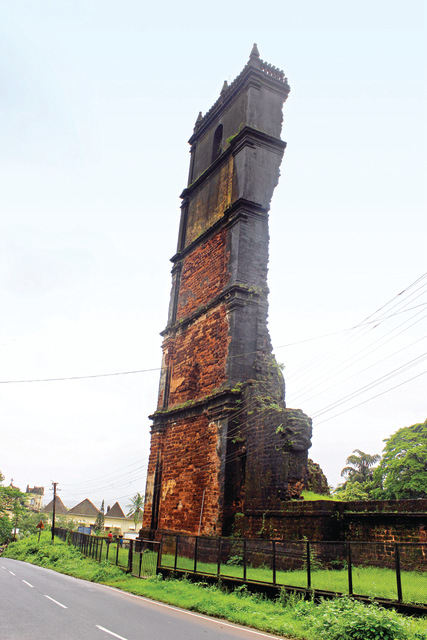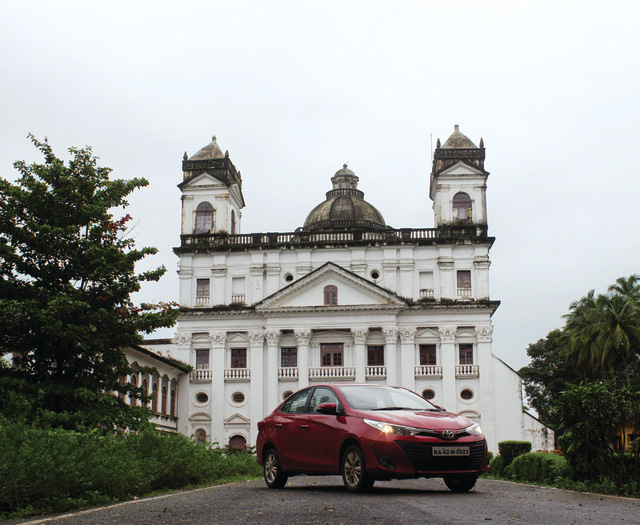
Soon enough thereafter, I had arrived in Goa. First stop: the old town or Velha Goa, as the locals call it. I’m quite sure that you’ve all heard of and seen the famous Basilica of Bom Jesus and Church of St Francis of Assisi, but there’s so much more to see apart from these two legendary places of worship. Starting with the Viceroy’s Arch. An old stone archway installed by the then viceroy Francisco da Gama, it carries an inscription of the da Gama coat of arms and holds aloft a statue of his grandfather, famed Portuguese explorer Vasco da Gama. The archway was the first thing the Europeans, entering via the Mandovi River’s port, saw and looks pretty impressive even today. Next up, we headed to the Church of St Cajetan. Modelled after the famous St Peter’s Basilica in Rome, the Church of St Cajetan was built in the 1600s by Italian friars. The church has a classic Corinthian style architecture and is absolutely mesmerising from outside and within. You can see a statue of the saint after whom the church is named in the grounds outside and a few interesting paintings of him, among other things, inside the church as well.

Next to the church building is a pastoral institute and, on the way out of the complex, you might notice a decrepit old gate almost hidden between the shrubbery. This is all that’s left of the reportedly glorious Palace of Adil Shah. Shah was the ruler of Goa in the 16th century and this impressive-looking gate gives you a hint of what the rest of his grand palace would have looked like if it hadn’t been razed to the ground. Speaking of razing to the ground, from St Cajetan we moved on to the Tower of St Augustine.
 This lonely, crumbling tower stands 46 metres tall and is the only part of the mammoth Church of St Augustine that still stands today. Built in the 1600s, the Church of St Augustine was legendary the world over, but neglect and eventual abandonment by Goa’s then Portuguese government in 1835 led to its eventual collapse. The first major damage occurred in 1842 and, by 1938, the church had already reached its present state, with only the solitary tower still standing. Of the eight chapels, four altars, and a convent, only this red-brick edifice now remains. Interestingly, the bell from this tower was salvaged in the late eighties and can still be found in its relocated residence at the Church of Our Lady of the Immaculate Conception in Panjim.
This lonely, crumbling tower stands 46 metres tall and is the only part of the mammoth Church of St Augustine that still stands today. Built in the 1600s, the Church of St Augustine was legendary the world over, but neglect and eventual abandonment by Goa’s then Portuguese government in 1835 led to its eventual collapse. The first major damage occurred in 1842 and, by 1938, the church had already reached its present state, with only the solitary tower still standing. Of the eight chapels, four altars, and a convent, only this red-brick edifice now remains. Interestingly, the bell from this tower was salvaged in the late eighties and can still be found in its relocated residence at the Church of Our Lady of the Immaculate Conception in Panjim.




















Leave a Reply